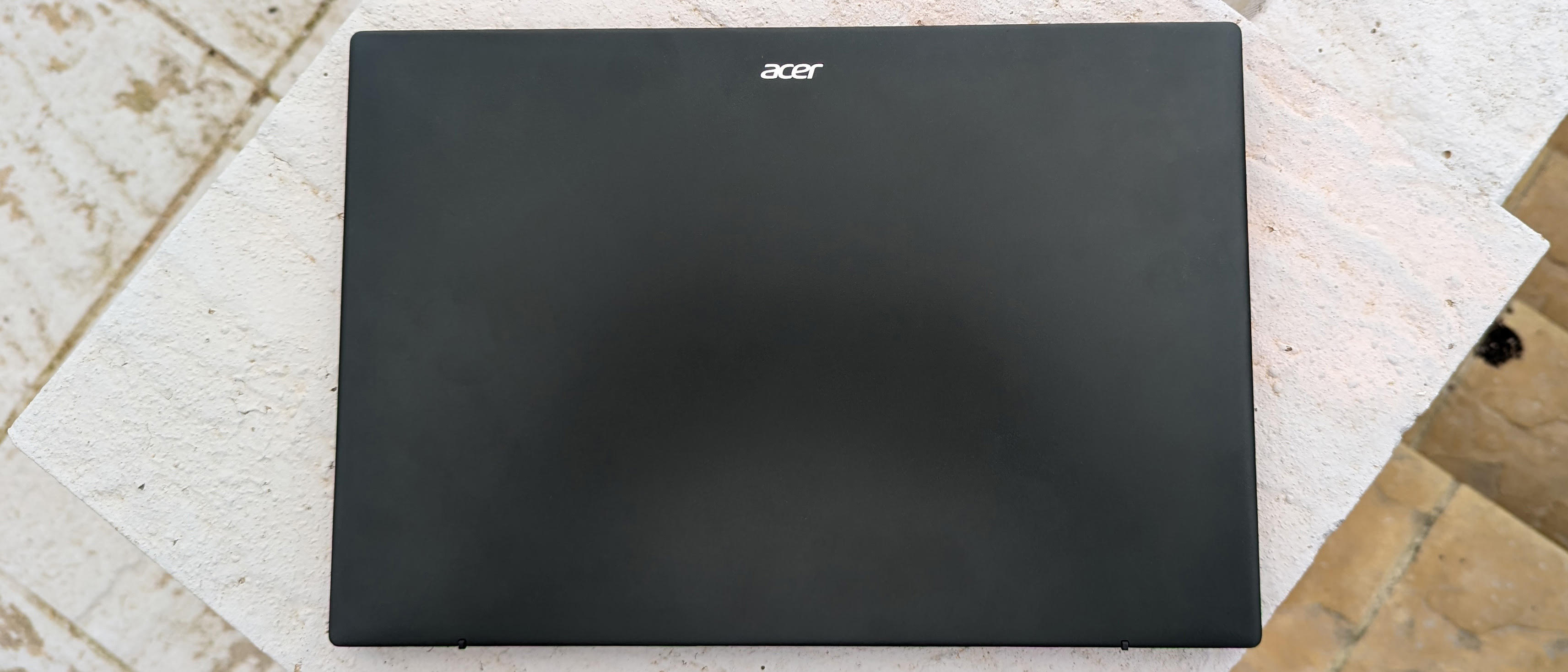Our Verdict
The Acer Swift Edge 16 is an excellent all-around laptop with a strong CPU and plenty of RAM. Creative software runs well, and the 16in, 16:10 OLED screen is bright, sharp and colourful. It may lack the graphics power for 4K gaming or heavy 3D rendering tasks, but is exceptionally light and portable thanks to a frame made from an aluminium-magnesium alloy covered with a black plastic casing. If you’re working with multiple apps open, or want to do image editing on the move, the Acer Swift Edge 16 is a capable tool.
For
- Thin and light
- Looks great
- Decent processor
Against
- No Windows Hello
- Average battery life
- Reflective screen
Why you can trust Creative Bloq
CPU: AMD Ryzen 7 6800U
GPU: AMD Radeon Graphics 680M
RAM: 16GB
Screen: 16in OLED, 3840x2400
Storage: 1TB
Ports: 2x USB 4 Type-C, 2x USB 3.2 Gen 1 Type-A, HDMI 2.1, headphones
Dimensions: 13.95 x 356.7 x 242.3 mm
Weight: 1.17kg
The Acer Swift Edge 16 is remarkably light. You notice it when you take it out of the box, as you’ll put a bit too much force into lifting it in anticipation of greater weight, and end up looking a bit stupid as it lifts up faster than you expected. It’s also thin, perfect for slipping into a stylish shoulder bag or laptop bag .
Inside, there are some decent specs too, and while this isn’t a laptop that’s going to appeal directly to gamers, it should be able to hold its own. It’s a bit of an all-rounder, providing good CPU performance, a nice dollop of internal storage, a glorious OLED screen, and some fast USB 4 ports for connecting to hubs, screens or external SSDs.
A few things about it, however, have been sacrificed in the pursuit of lightness, and we’d have liked to have seen a more potent cooling system and better speakers. However, these are edge cases that will only be of interest to those who push their laptops hard with 3D apps, or like to watch movies with the built-in speakers instead of headphones. Most of the time the Edge 16 is perfectly good enough, and in a few cases, it’s excellent.
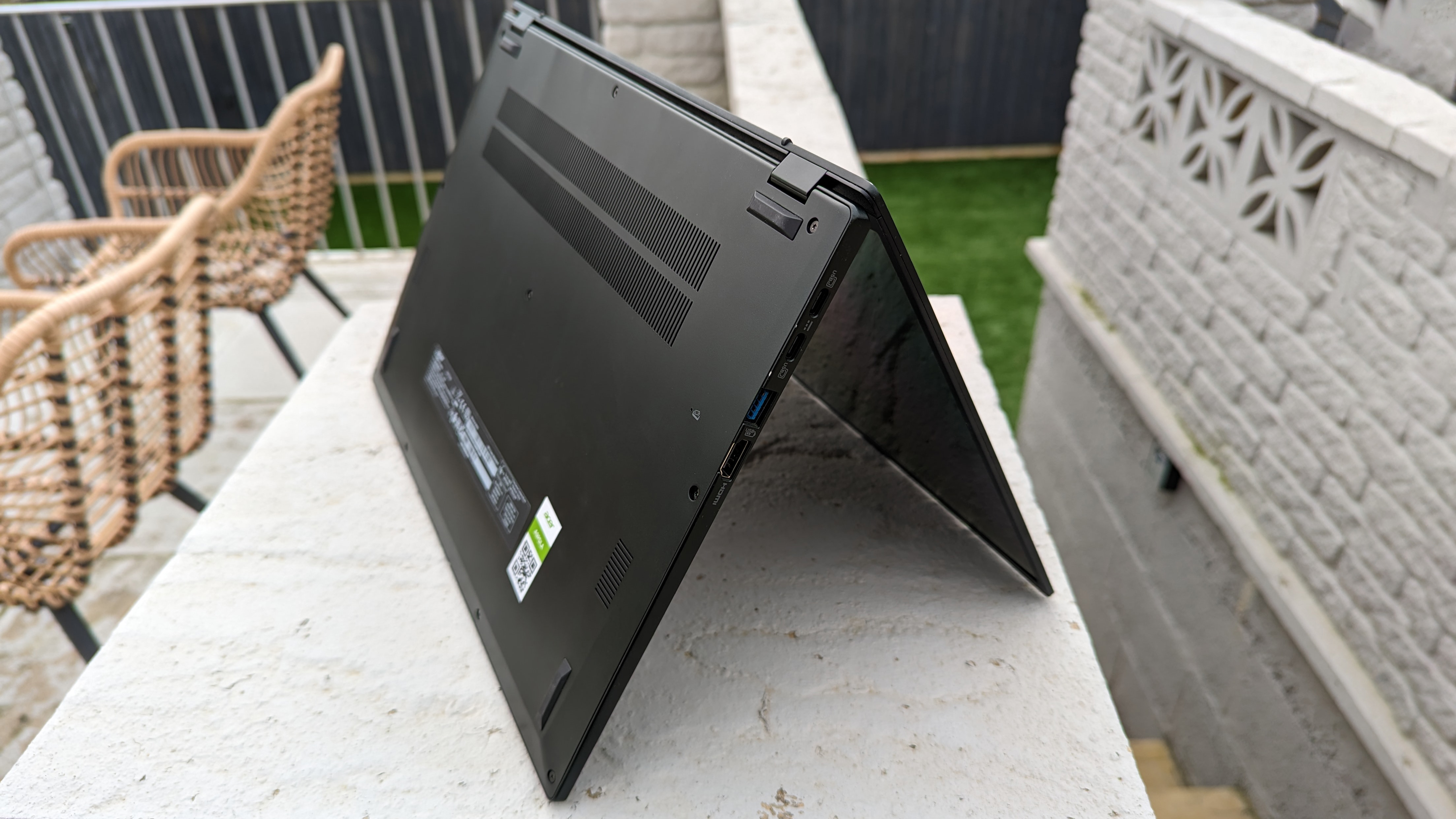
Acer Swift Edge 16 review: Design and display
The second thing you notice about the Edge 16, after the weight, is the screen. It helps that, when you switch it on, the Acer logo appears in a shade of green that’s halfway between ‘toxic waste’ and ‘Tom Jones’ lawn’. It’s an HDR OLED, of course, with a 16:10 resolution that’s not unadjacent to 4K and a brightness output of 500 nits. It hits the DCI-P3 colour gamut, and is generally nice to look at.
The only thing that’s wrong with the screen is that it’s very reflective, and could have done with some sort of extra coating to correct this. Still, it’s bright enough to be easily used in most lighting conditions, and it’s not a touchscreen so won’t get coated in fingerprints. It’s a bit of a dust magnet though.
Otherwise, it’s yet another black rectangle, a discreet silver Acer logo on the lid letting others know your manufacturer of choice. Otherwise the back of the lid is seamless, with no contrasting panels or additional lights. Open it up, and the thin bezel looks stylish, while the backlit keyboard and moderately sized trackpad.
The screen hinge doesn’t allow the laptop to lay flat, and there is a speaker grille in the top of the casing just below the screen, with a DTS logo next to it. The keyboard has very little travel, but the keys are full-size and we didn't have a problem typing on it. We do wonder if a small numpad could have been squeezed in by shunting everything left a bit, but that’s a minor gripe.
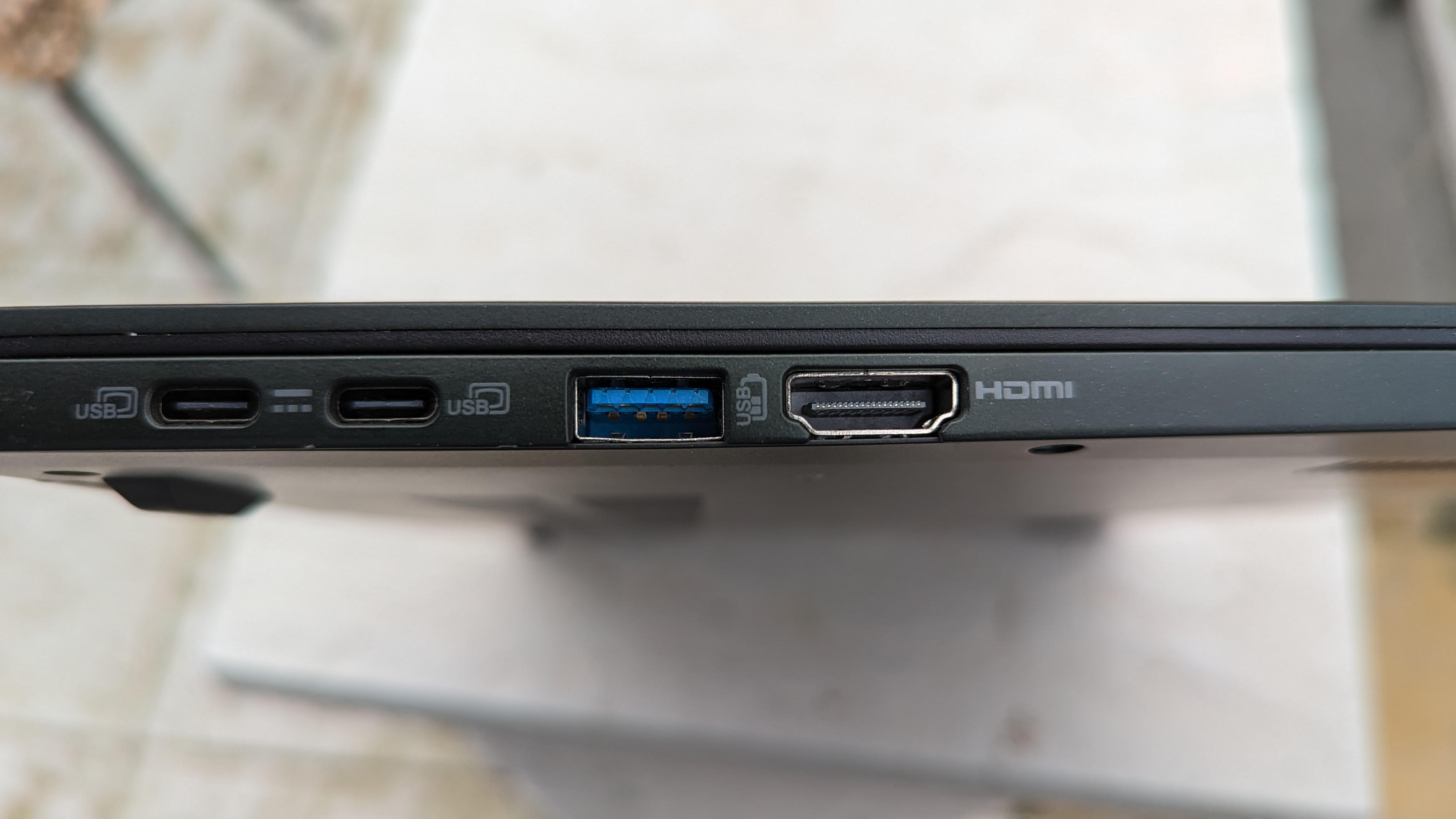
Features
There's a scattering of ports on the outside edges of the Edge 16, but it’ll be enough. With two USB 4 Type-C ports, each of which can also connect to a monitor and charge the machine, it’s versatile enough. There's a full-size HDMI 2.1 port capable of 10K output, should you have a monitor of that resolution laying around, though we couldn’t get a signal out of it on our test machine, the 4K external monitor we tried preferring to be attached to the USB-C port via an adapter. This is almost certainly our fault and not Acer’s.
With two further USB 3 ports there's plenty of opportunity to hook the Edge 16 up to a docking station if you’re working at a desk, with a Kensington lock socket adding extra physical security. There's also no Ethernet socket, so you’ll have to add one via a dock if it’s needed. A tiny webcam graces the top edge of the screen, sports a 1080p resolution, and has some clever noise-reduction tech built in to both the sensor and its mics. It doesn’t support Windows Hello, for face-recognition unlocking, but there is a fingerprint reader in the power button.
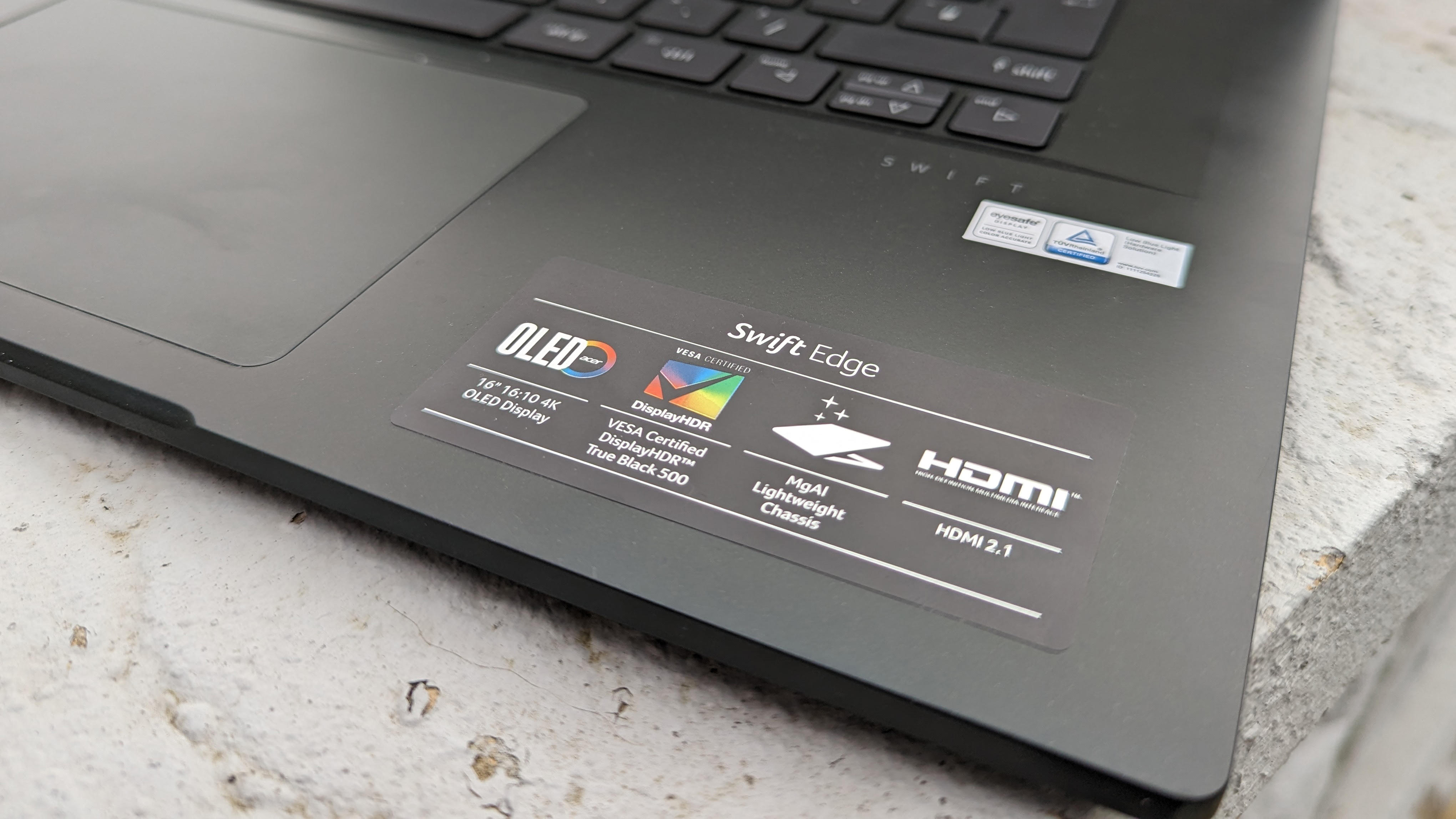
Performance
Cinebench R23
Multi-core: 8,566
Single-core: 1,411
PCmark 10
CPU: 6,033
Geekbench 6
Single-core: 1,819
Multi-core: 7,714
Battery-life test:
7hrs 15m
The CPU inside the Swift Edge 16 is an AMD Ryzen 7 6800U. It’s an eight-core Zen 3+ processor capable of simultaneously processing 16 threads, runs at 2.7GHz with a boost clock of up to 4.7GHz, and comes with a Radeon 680M integrated GPU with 12 of AMD’s RDNA2 cores.
Paired with 16GB of LPDDR5 RAM, it’s an excellent all-round package that shouldn’t break a sweat at anything short of heavy 3D gaming or high-res rendering. The U-series is the tier of AMD processors that uses the least power, so it’s ideal for a portable.
This CPU makes the Edge 16 more powerful than the Steam Deck, and the 6800U is a common choice in the Steam Deck clones we’re starting to see in the market, but the Edge 16 has a higher resolution screen to push. It’s going to be fine playing games from the last five years at 1080p or 720p and medium to low settings, but don’t go expecting a portable 4K gaming powerhouse, as the integrated GPU just isn’t up to the job. Likewise, while it’s fine adding GPU acceleration to Photoshop and Lightroom, it’s not a chip that’s going to give you huge performance in After Effects or Blender.
Its Geekbench 6 score puts the CPU just behind a 10th-generation Intel i9 chip released in 2020, and it’s only about a thousand points behind the Apple M2 in the MacBook Air, indicative of the jumps forward CPU design has made in the interim. The chip does stress the Edge 16’s cooling system, however, with the fan springing into life even when carrying out light tasks. It’s not particularly noisy, just producing a metallic whooshing sound, but it’s there. The fan is actually visible through the intake grille on the base of the machine, which at least means you know which part should not be clogged with dust.
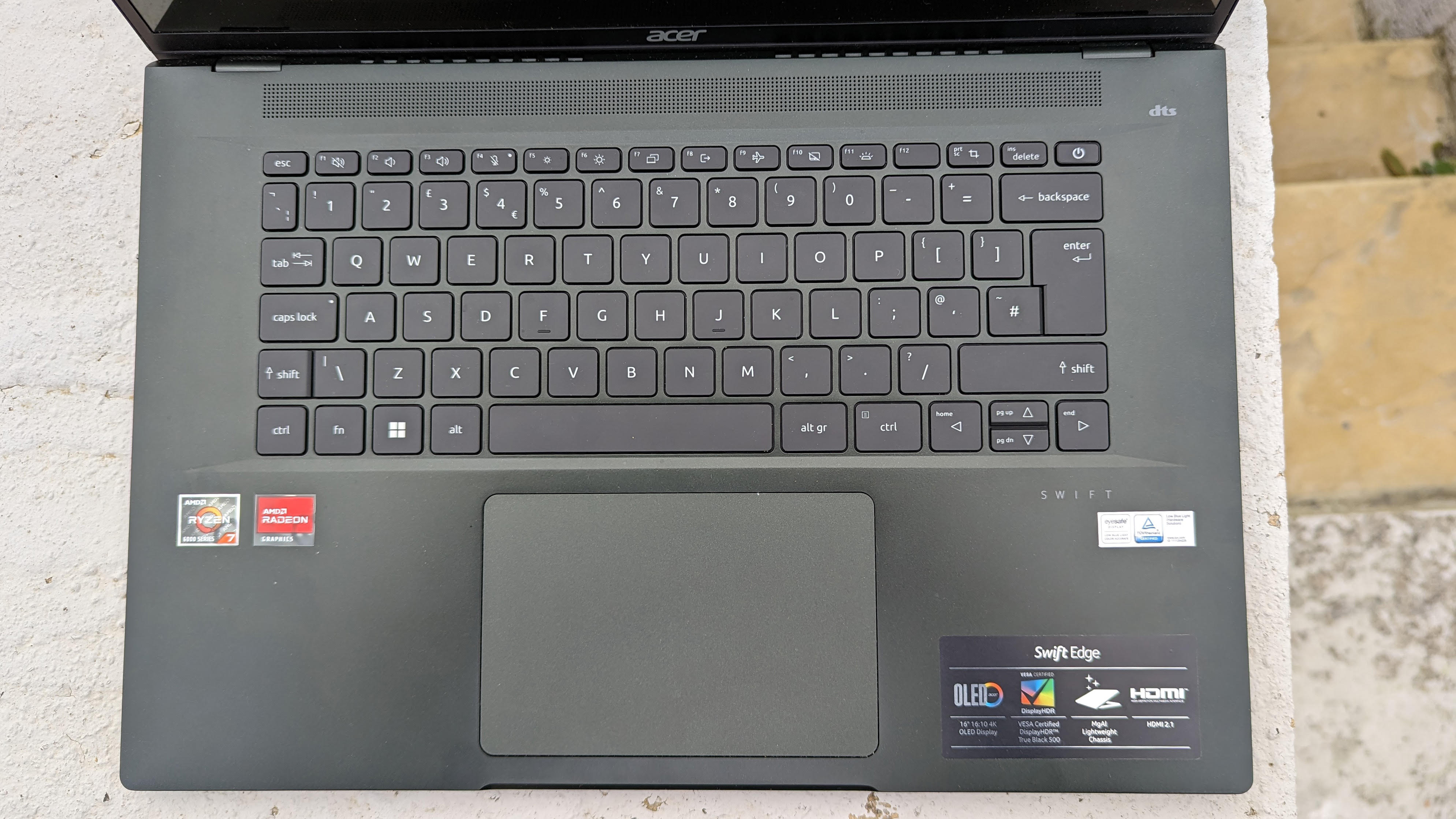
Should you buy the Acer Swift Edge 16?
If the thinness and lightness of your laptop are important to you, then the Acer Swift Edge 16 is a great choice. It’s a jack of all trades, not specialising in any particular area, and the screen can look spectacular. It also has good connectivity, and starts up remarkably fast. It does, however, come with pre-installed software that nags you to buy a subscription with pop-ups, an annoyance that’s going to mean uninstalling the app or at least clicking the ‘never show again’ button.
At a price that’s skirting the £1,500 mark in the UK, and $1,300 in the US, it’s easily in MacBook Air M2 or even MacBook Pro 13in territory. The screen on the Edge 16 is much larger, but the M2 beats the 6800U in Geekbench tests.
Still, Windows 11 is maturing into an excellent operating system, and as an all-rounder laptop with enough grunt for creative tasks, the Edge 16 would make an excellent choice.

Thank you for reading 5 articles this month* Join now for unlimited access
Enjoy your first month for just £1 / $1 / €1
*Read 5 free articles per month without a subscription

Join now for unlimited access
Try first month for just £1 / $1 / €1
out of 10
The Acer Swift Edge 16 is an excellent all-around laptop with a strong CPU and plenty of RAM. Creative software runs well, and the 16in, 16:10 OLED screen is bright, sharp and colourful. It may lack the graphics power for 4K gaming or heavy 3D rendering tasks, but is exceptionally light and portable thanks to a frame made from an aluminium-magnesium alloy covered with a black plastic casing. If you’re working with multiple apps open, or want to do image editing on the move, the Acer Swift Edge 16 is a capable tool.

Ian Evenden has been a journalist for over 20 years, starting in the days of QuarkXpress 4 and Photoshop 5. He now mainly works in Creative Cloud and Google Docs, but can always find a use for a powerful laptop or two. When not sweating over page layout or photo editing, you can find him peering at the stars or growing vegetables.
